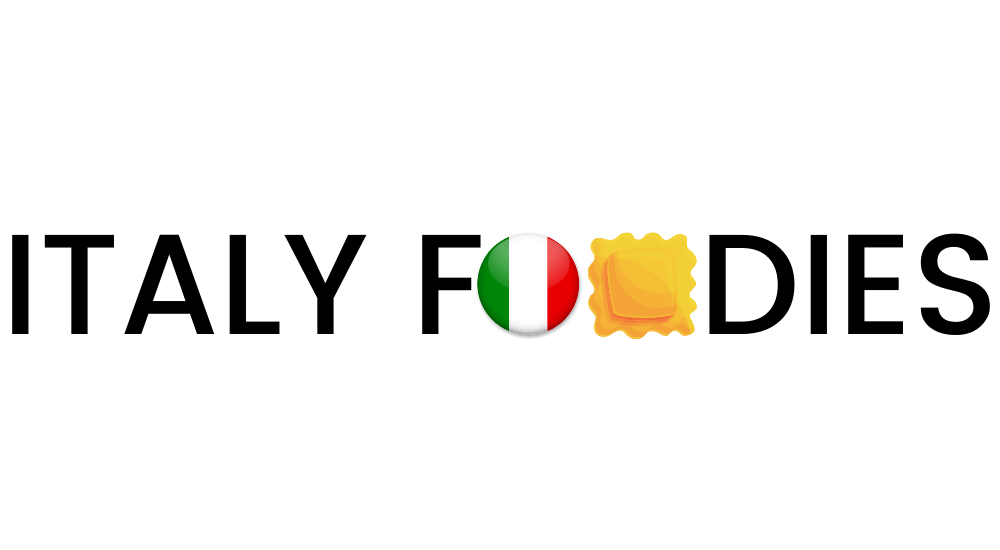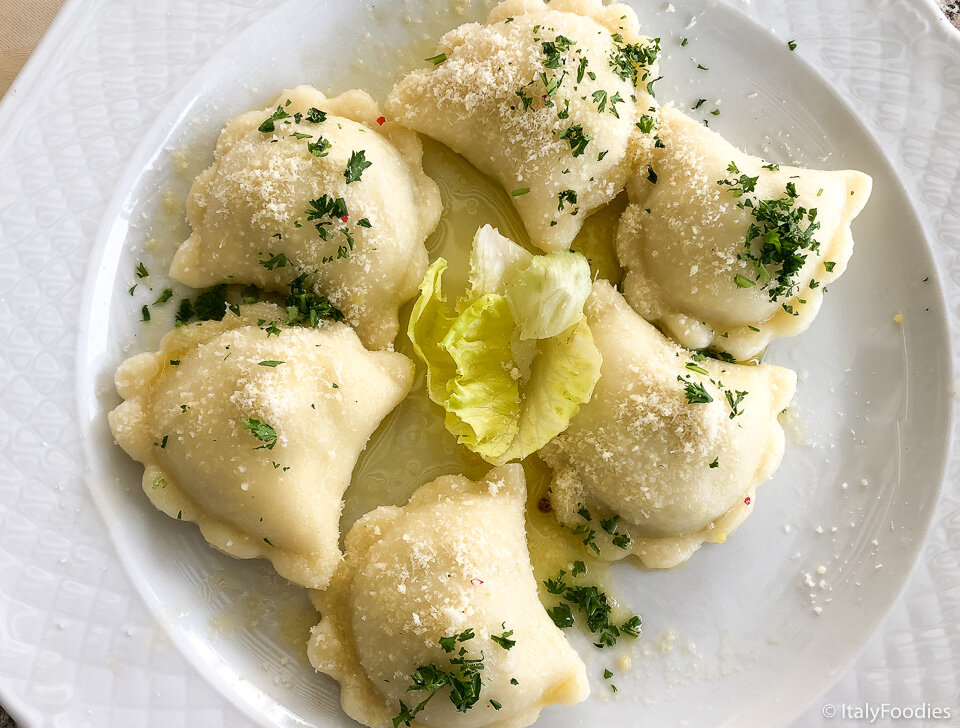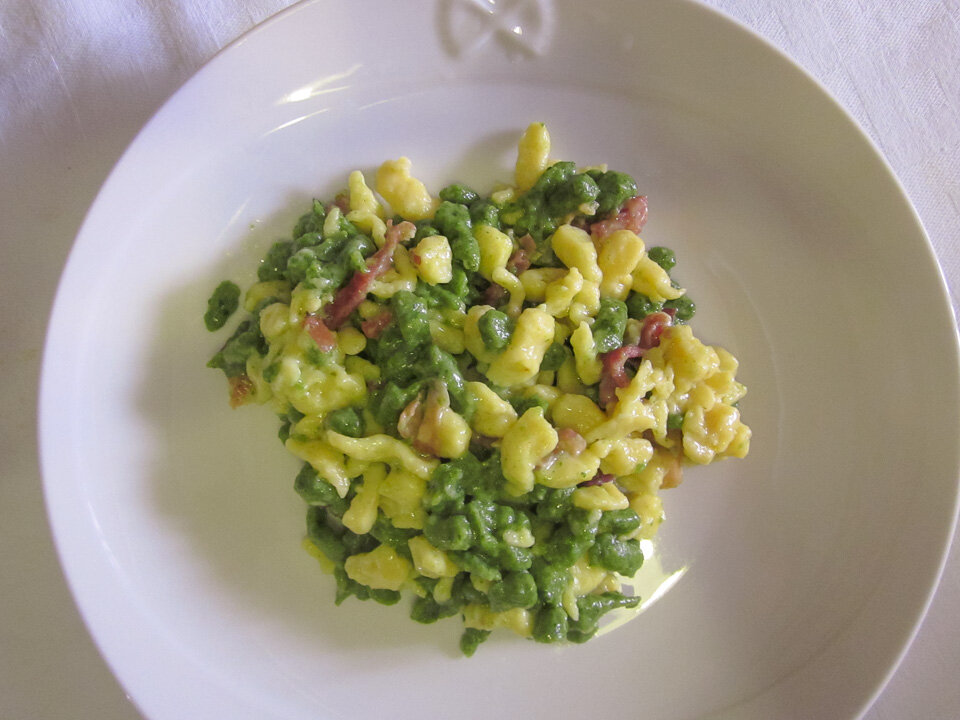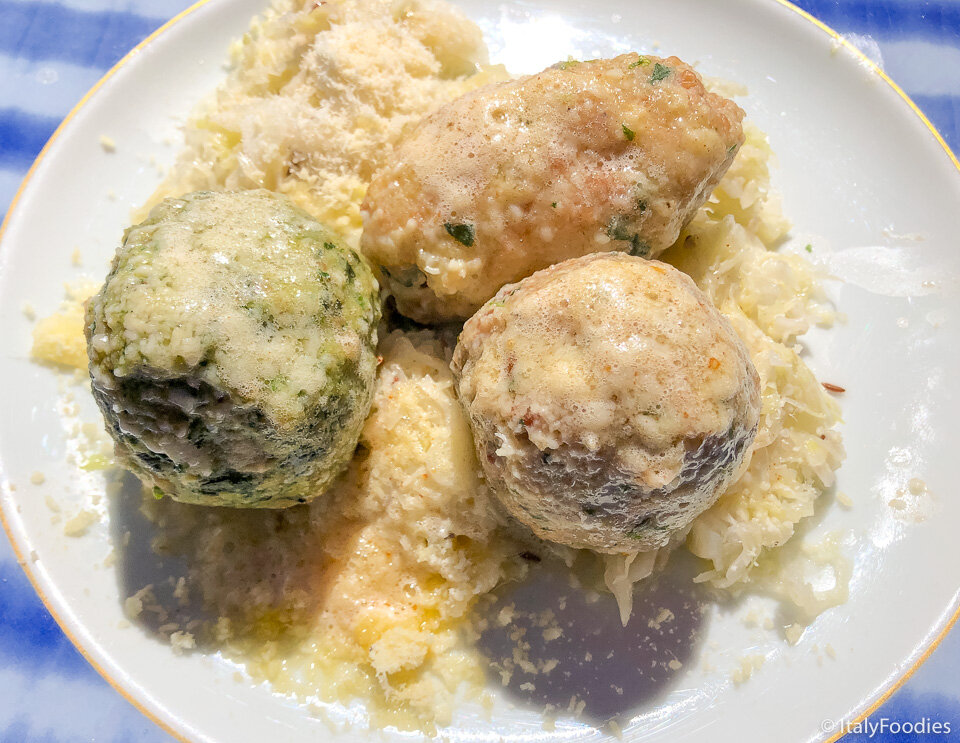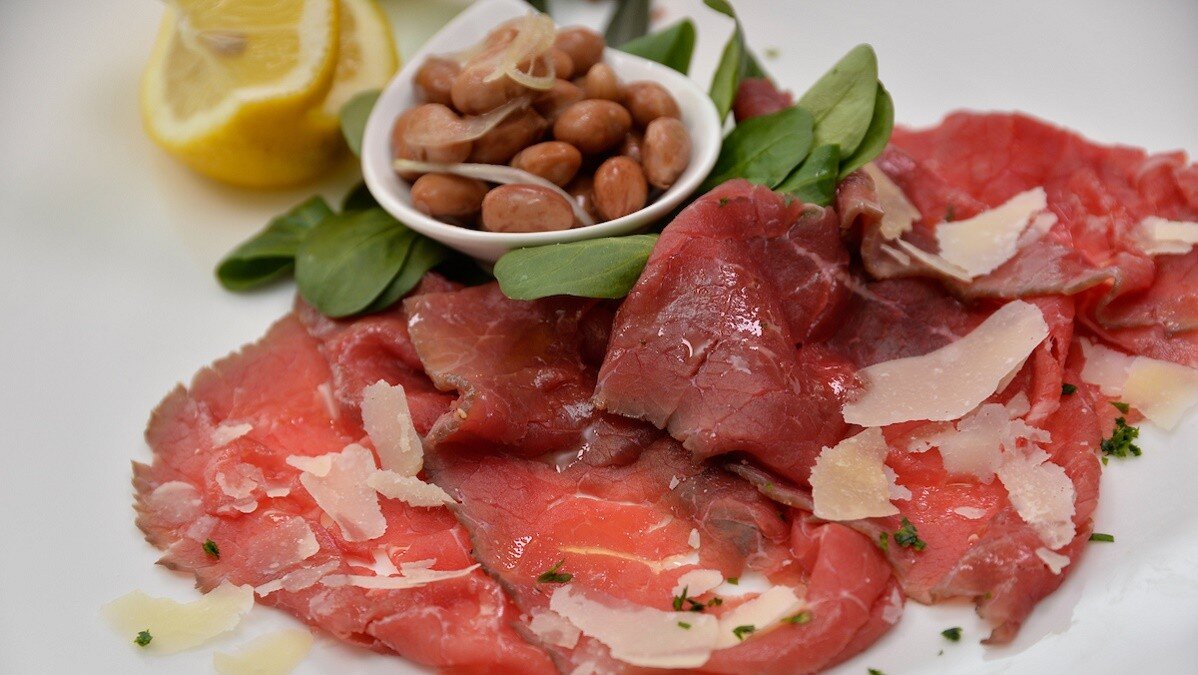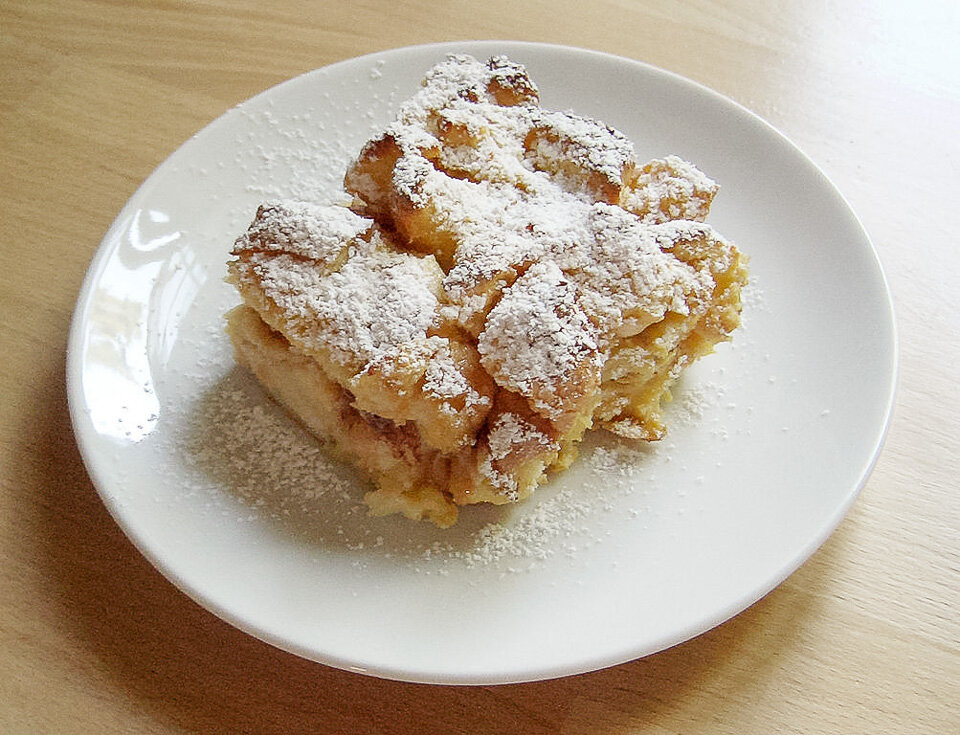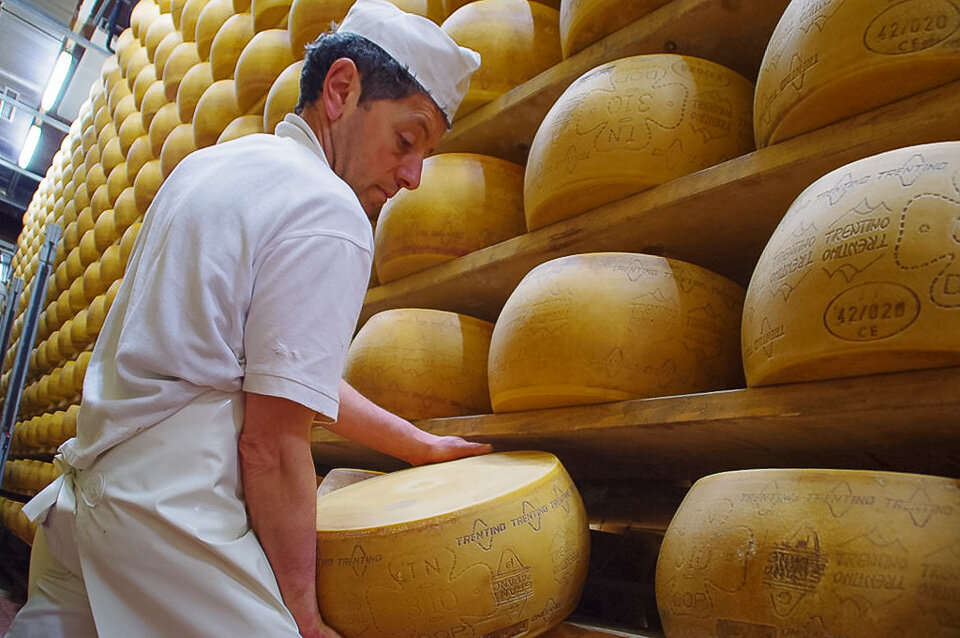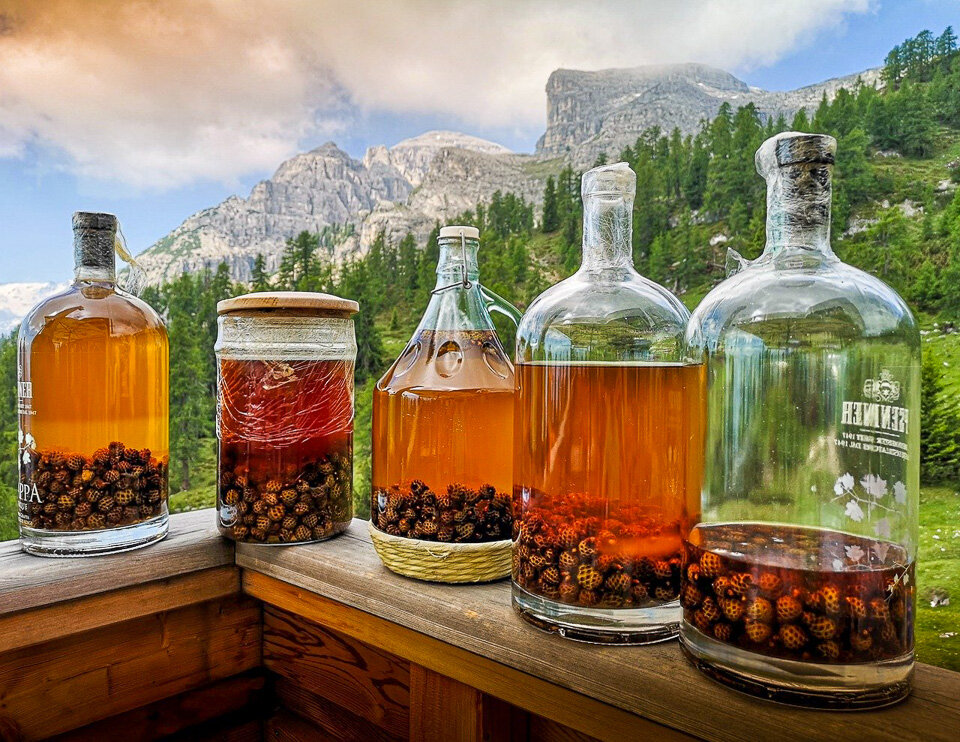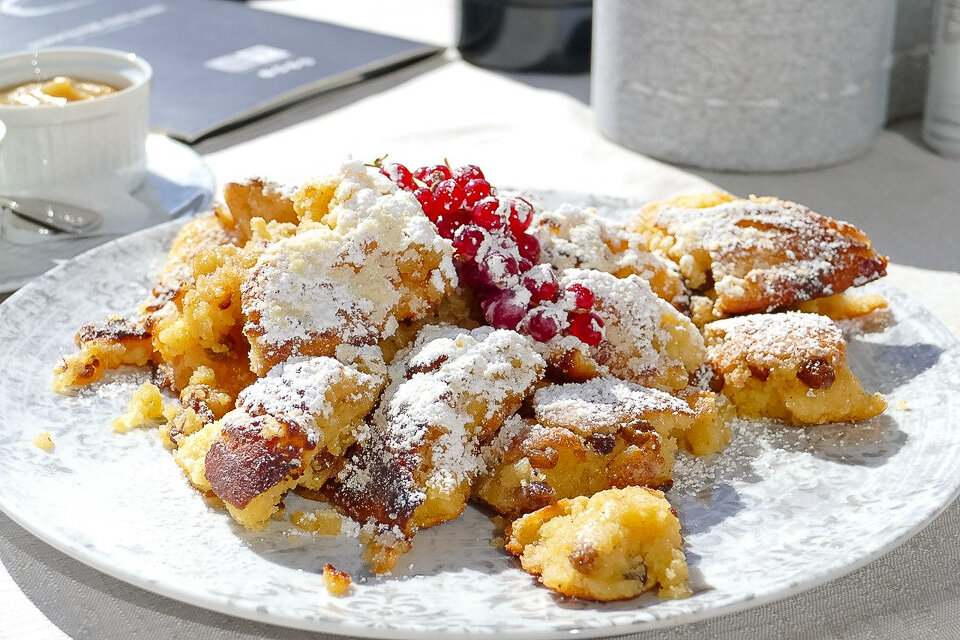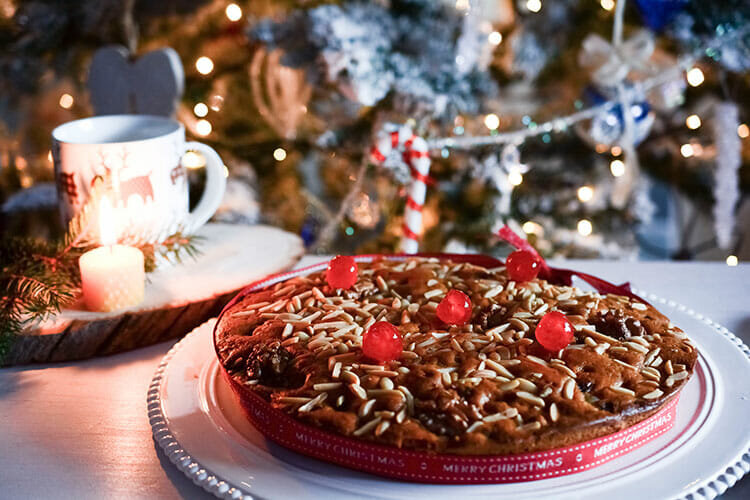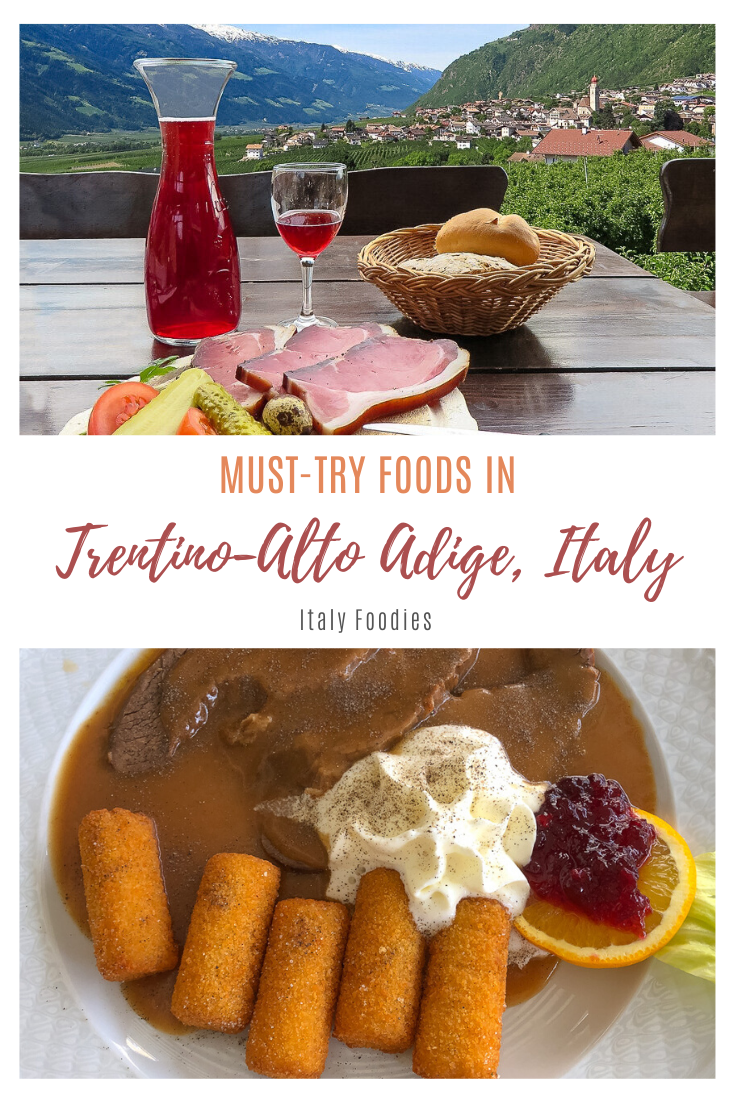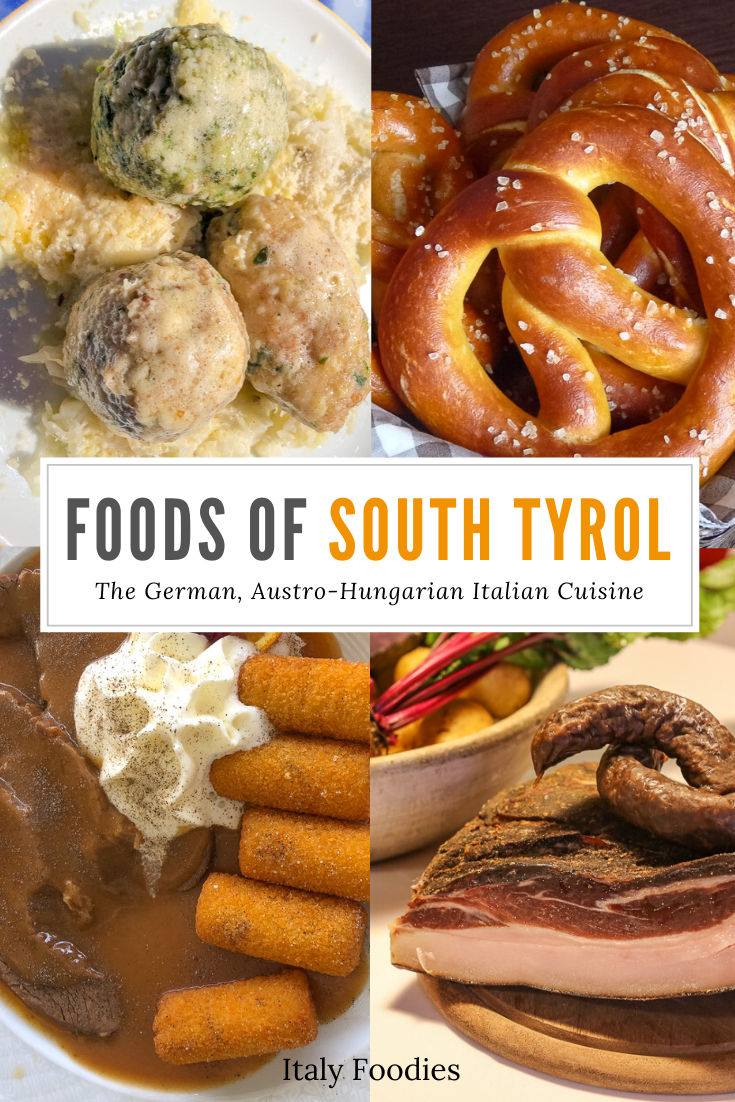South Tyrol Food Guide: Must-Try Foods in Trentino-Alto Adige, Italy
The food of Trentino-Alto Adige in the South Tyrol region of Italy is not what you might think of as typically Italian food, and the same could be said for just about everything in the region, with its local culture more Germanic than Italian.
In fact, the locals here refer to themselves as German-speaking Italians.
As for the food in this part of northern Italy, the influence of surrounding food cultures — most notably Germany, Austria, and Hungary — is interesting and delicious.
Pasta dishes, polenta, and pizza coexist alongside sauerkraut, hearty stews, schnitzels and game meats, and popular comfort food dishes made with apples, ham, and cheese. And lots and lots of cheese!
Interesting the regional wines produced in this part of Italy pair so well with the rich foods — it’s a marriage made in foodie heaven.
South Tyrol Food
A typical lunch of South Tyrol food will often include wooden boards piled with speck, locally made cheeses and breads like Schüttelbrot in a country-style pub in an alpine meadow or Törggelen cellar.
The fusion of Italian, Alpine, and Central European cuisines has resulted in a unique and diverse culinary world and a fascinating place to visit for foodies, reflecting the dual identity of the Ladin history of the Trentino region and the Austro-Hungarian roots found in Alto-Adige (South Tyrol).
Foodies will find familiar Veneto dishes like Pasta e fagoli and polenta here, as well as more Germanic dishes.
Dishes such as knodeln, spaezli, and goulash, all based on locally sourced products grown here — fruits from the valleys; grapes and other crops cultivated on hillside terraces; cows, goats and sheep raised in mountain pastures; trout from streams fed by ice cold glaciers; game and mushrooms from the forests; and a variety of cheese and cured meats from pigs, sheep, and dairy cows.
Traditional Tyrolean food is one of Italy’s most distinct regional cuisines, and a must-try for Italy foodies.
Nervous about getting off the beaten path at Italy’s local restaurants?
Be sure and read our Essential Guide to Italian Food Phrases for ordering food in Italian!
When to Visit South Tyrol
Northern Italy has much to offer any time of year. For a region known for their stunning alpine vistas, winter attracts snow and ski lovers from around the world for every activity involving snow. Summer is our favorite time, with the green meadows and mountain flowers in full bloom.
When it comes to food, you’ll be able to taste seasonal favorites no matter what time of year you visit. The Christmas market season is an especially good time to visit (usually December 8th through January 6th, the Epiphany) if you want to try a wide variety of local foods.
Not only is Bolzano one of the Italy’s best cities for food, it’s also bustling with beautiful markets where you can taste your way through the region’s cuisine with various food stalls selling everything from charcuterie boards to the local holiday wine infused with herbs.
Christmas market in Bolzano, South Tyrol, Italy
Must-Try Foods of South Tyrol
Pasta and Polenta
Ravioli alla Pusterese/Schlutzkrapfen
One of the traditional pasta dishes of Alto Adige the half-moon (Mezzelune in Italian) shaped ravioli are made from rye and wheat flour. Stuffed with spinach and ricotta cheese, they are usually served with brown butter and Parmesan.
The German-style ravioli is stuffed with sauerkraut and fried rather than boiled.
Tagliatelle
A long and flat past noodle, this hearty pasta is one of the most traditional foods of Bologna a bit further south, but in South Tyrol you’ll find it served with ragú made from pork or beef and often with game meat like venison.
Strangolapreti
A spinach and cheese flavored gnocchi made from stale bread, spinach or other seasonal greens like chard. These stick to your ribs gnocchi are enjoyed topped with brown butter and sage, or sometimes served in chicken broth.
The term literally translates to “priest stranglers” from medieval folklore. If a priest ate too many of these gnocchi, he would choke and be strangled.
Bigoli
An influence from Venice, this extruded pasta is thick, tubular, and very long. If you’re familiar with the hollow spaghetti pasta called bucatini, bigoli is similar to this.
Spatzle Tirolesi
An Italian version of German spätzle prepared throughout the region. It’s a green pasta made from boiled spinach, eggs, flour, and nutmeg tossed in a sauce of heavy cream and crispy speck that has been fried in butter. Usually topped with Parmigiano.
South Tyrol Tagliatelle di Schüttelbrot
This pasta is made by grinding Schüttelbrot (a crisp rye bread) and mixing it with eggs and semolina flour to make pasta dough. It’s served with fresh chanterelle or porcini mushrooms and often speck fried in butter is added along with a generous sprinkle of fresh parsley.
Polenta
Polenta, yellow cornmeal, is a staple in Trentino-Alto Adige cuisine. It can be eaten hot as a side topped with mushrooms or cheese. It’s also left to harden a bit then sliced and fried. Polenta is a versatile food served with meats, sauces, mushrooms, or mixed with butter and cheese. There is also a dark polenta made from buckwheat flour.
Polenta cake
Smacafam
A very traditional dish in the region, it’s made with lard, butter, fresh pork sausages called luganica that have been thinly sliced, buckwheat flour, olive oil, and grated cheese. The casserole is topped with butter and grated cheese then baked until it has a nice brown crust on the top.
Dumplings
Canederli
These versatile bread balls or dumplings were some of our favorite foods we ate in South Tyrol, and we found them in all the restaurants in Bolzano.
Canaderli are most often flavored with speck, pancetta, spinach, or ricotta cheese. They are served with meat, in soup, drizzled with butter, or filled with fruit and eaten as a dessert.
Families have their own unique variations of the dish — like anywhere traditional recipes are handed down for generations!
Leberknödel
Originating in Central Europe, Leberknödel are simply a liver dumpling made from bread, calves liver and herbs and most often served in broth or soup.
Soups and Stews
Tyrolean goulash
Adopted from Hungarian cuisine it is served with a helping of polenta. Polenta goes great with the beef and the main seasoning, paprika.
Minestra di trippa
This is a bread thickened soup with tomato sauce, vegetables and tripe (inner lining of a cow’s stomach). This is a hearty dish, more stew than a thin soup.
Saursuppe
This is another tripe soup flavored with herbs, onion, nutmeg and white wine.
Barley soup
A favorite made with vegetables, onion, garlic and speck, pork that’s been salted and lightly smoked.
Trisa
Trisa is a rich stick to your ribs meal. Polenta and wheat flour are cooked with butter and milk to make a hot soup. The dish is named for the large wooden spoon shaped like a paddle that was traditionally used to stir the polenta in a large cauldron.
Cured Meats and Fish
Speck dell’Alto Adige PGI
There are 29 speck producers in Alto Adige who must conform to the European Union rules governing Protected Geographical Indication (PGI). Similar to prosciutto, the cut of pork is dry-cured and smoked versus the salted and cured prosciutto showing the German influence in preserving meat.
Animelle
Fried cow or sheep entrails usually eaten as an appetizer.
South Tyrolean Speck
Pork (ham) that has been salt cured and lightly smoked. It’s unique flavor comes from the addition of juniper berries to the curing process.
Luganega
A mild pork sausage that is made as one long sausage instead of being divided into links. It’s sometimes referred to as ‘salsiccia a metro’, or sausage by the meter because that is how it is generally sold, by the meter.
It’s made throughout Italy (though it’s known as lucanica in southern Italy where it can be spicy with red pepper), but what is considered the best comes from here in the north. It must be cooked before eating and is used in a variety of dishes.
Mortandela
Not to be confused with mortadella from Emilia Romagna, this type of salami or smoked pork sausage from Trentino’s Val di Non has a history that goes back centuries. Shaped into a huge meatball without a casing, the pork mixture is smoked then aged.
This sausage typifies the melding of German (smoking) and Italian (salting) culinary methods. You will find mortandela on charcuterie platters and also cooked with polenta and potatoes.
Salumi del Trentino
A lightly spiced salami enjoyed throughout the region in a variety of dishes. Generally it’s made from pork but is also made using horse meat or goat meat.
Venison
Besides beef and pork, deer meat or venison is regularly enjoyed in South Tyrol. Although hunting for deer is practiced, most venison today is farmed.
Carne Salada
Typical in the Trentino area, lean raw beef is aged in containers along with spices, most notably juniper berries.
After aging for at least two weeks, the beef is thinly sliced and eaten either raw as carpaccio, or cut slightly thicker and cooked along with traditional ingredients like beans.
As carpaccio it is served with a drizzle of olive oil, rocket (arugula), and parmesan shavings. Carne Salada is chock full of flavor and is used in a variety of dishes from sauerkraut to sautees.
Speck bacon
Made from boned pork legs, the meat is lightly smoked and then hung to age. Unlike South Tyrolean Speck, the Trentino version is less smoked.
Ciuighe
Made from the less desirable cuts of pork and mixed with a lot of turnips to make a type of salami called Ciuighe.
The sausage is still being produced but now better cuts of meat are used and the amount of turnips is in the recipe is much less. Also known as Ciuga del Banale.
Trout
An incredible number of rivers, streams and mountain lakes, make fishing a prime way to get out into the beautiful scenery and wild nature of this region. The most fished for fish in the region is trout, specifically Marbled Trout.
The meat of the Marbled Trout is sweet and mild, and the preferred fish eaten in the Trentino-Alto Adige. Trout poached in white wine with vinegar and spices and served with a bit of melted butter is a typical Tyrolean dish.
Alpine Char
Farmed using fresh water straight from street streams, the "King" of freshwater fish is then preserved by adding salt and sugar. This treatment maintains the delicacy and flavor of its lean meat, which is made even better by smoking.
Fruits
Because the climate and elevation favors growing a variety of apples, Trentino Alto Adige recipes are famous for their yummy and substantial apple desserts.
To learn more about local fruits, tourism folks have set up the Apple Route and Flavors of the Non and Sole Valleys.
The tour groups together the apple, pear, and cherry producers as well as recommending accommodations and other places of interest.
APPLES
Nearly 300 million kilos (330,700 tons US) of apples a year are grown in this region much of which is produced in the Val di Non in Trentino. Apples are used in the traditional local cuisine in both sweet and savory recipes.
The most famous pastry of the region comes from the German/Austrian tradition of making sweet and light pastry stuffed with apples — Apfelstrudel (apple Strudel) and ‘smorn’, a simple sweet apple pastry.
Apfelschmarren
This seems to be a broad term for apple fritters that are fried in oil until golden, apple pancakes, and an apple souffle. These are sweet and yummy treats.
Scheiterhaufen
A layered casserole of alternating bread and apples that is baked. This too is a sweet treat that tends to fall apart a bit when served. That’s part of the enjoyment. Depending on what the chef has on hand, hazelnuts and/or raisins are added.
Apfelküchel
A cake chocked full with pieces of apple.
PLUMS
Susina di Dro is a dark purple plum produced in Trentino-Alto Adige. It is distinguished by its low sugar content and delicate sweet flavor. They are eaten as fresh fruit, in desserts, dried, in juices, jams, gelato, and liqueurs. They are so prized that an annual festival, Dro - ‘The Time of the Plum’, is held every year in August.
Also grown throughout the region are strawberries, blueberries, red currants, cherries, blackberries, raspberries, and baby kiwi.
Veggies Grown in South Tyrol
The many distinct microclimates of the region provide seasons for growing a large variety of vegetables. The main vegetables used in the regional cuisine are: carrots, potatoes, celeriac, leeks, cauliflower, cabbage, cucumbers, onions, green beans, lettuce, tomatoes, radicchio, zucchini, asparagus, beets. Mushrooms are especially anticipated in the spring and summer.
Cheeses in Trentino-Alto Adige
Dairy cows are the main livestock raised in Trentino. Almost all the milk produced by the Trentino farms goes to dairy coops within the region.
Trentingrana DOP
Grana Trentino, the best-known cheese of the region, follows the same method as that used to produce Parmigianino Reggiano in Emilia Romagna, but is made in the province of Trento.
Only unpasteurized milk from cows feeding in the surrounding high mountain pastures in the Gran Padano DOP/PDO (Protected Designation of Origin) is used giving this hard cheese a very distinct flavor and straw color.
Asiago PDO
Produced from unpasteurized cow's milk and on the Asiago plateau, this cheese dates back over a thousand years. When fresh it has a mild flavor and is white in color.
Provolone Val Padana PDO
Produced in several provinces in Trentino-Alto Adige, this semi-hard cheese is made from whole cow’s milk. It has a thin smooth rind, a straw color, and comes two ways, dolce (a mild flavor) and Piccante (stronger spicier flavor).
Spressa delle Giudicarie PDO
Made mostly from the raw semi-skimmed milk of the native Rendena breed of cows and has a white to pale straw color. This semi-hard cheese is eaten two ways: when young (Giovane) it has a milder, sweeter flavor. When mature (Stagionato) it has a stronger more savory flavor.
Stelvio PDO
An aged cheese made in the territory of Bolzano, and locally known as ‘Stilfser’, this semi-soft cheese is loved for its strong herbal flavor and spicy taste. It is aged for a least sixty days until the rind is an orangey color. Stelvio is eaten with cold cuts like speck and prosciutto, and typically used in polenta.
Vezzena
Made in the summer when the cows are grazing in the high altitude pastures, this cheese tends to have the aroma and a slight taste of what the cows were eating at the time of milking. This is a buttery cheese that must be aged for at least twelve months, and is often aged for up to two years. Since flavor becomes more complex the longer that cheese is aged, the longer aged cheeses are a Trentino favorite.
Breads in Trentino-Alto Adige
The Trentino-Alto Adige provinces blend both Italian and Austrian baking traditions to offer an unbelievable selection of Itallian bread types and other products. The farther north you go, the darker the breads become due to the amount of rye added with the wheat in recipes.
There are strict guidelines for bakers to follow to earn the seal given to an authentic regional product, known as the Qualitat Südtirol seal.
Vinschger Paarl (Paarlbrot)
Unusual in that it’s a sourdough bread made from rye flour. Dating to the thirteenth century, it’s believed to have had its origin in the Monte Maria Benedictine Abbey in Burgusio. It’s made in a rounded sort of heart shaped double loaf. What makes it unique is that its seasonings include cumin and fenugreek (a Mediterranean herb similar to clover the seeds of which smell and taste a bit like a light maple syrup. It’s enjoyed with cheeses, cold meats, and sausages.
Schüttelbrot bread
A crispy flat ‘shaken bread’ made with rye flour and caraway, aniseed (similar in taste to star anise), coriander, and fennel. It’s enjoyed with wine, cheeses, and cold meats.
Vinschgauer Struzan
A rye and wheat bread formed into a horseshoe shape and baked with typical regional spices like aniseed and fenugreek.Vinschgauer Some versions are sweet with the addition of raisins and figs.
South Tyrolean Bretzels/Fastenbrezel
These twisted and salted bretzels are made from only flour and water. It is believed that they were invented in the seventh century by monks. The twisting was to represent the hands in prayer and the three holes or openings representing the Holy Trinity.
German immigrants brought them to the US in the nineteenth century. In the northeast US especially in Philadelphia and New York City, these ’soft pretzels’ are sold by vendors on nearly every street corner.
South Tyrolean Bretzels
Laugen
This bread has a shiny crust and is produced in a loaf, as a baguette, or small roll size. It tastes like the soft pretzels mentioned above.
Pane Scuro di Segale
A dark rye bread found throughout the region, also known as pane nero. The texture and flavor varies depending on what grains, herbs, and flours are available in a particular area.
Fruchtbrot/Apfelbrot
One of our personal favorites is made with rye flour, dried apples and cinnamon along with sesame and sunflower seeds. It’s dense, sweet, and delicious. Versions of this are also known as pane rustico con frutta secca and contain plums, apricots and walnuts.
Kletzenbrot
This is also a fruit bread made on holidays that can include fruits like apples and pears, apricots, plums, raisins, figs, and walnuts.
Grappas in Trentino-Alto Adige
Trentino Wine
A great many varietals are represented in the region’s wine production — Chardonnay, Cabernet, Schiava, Merlot, Moscato, Pinot Noir, Sauvignon Blanc, Pinot Blanc, Gewürztraminer, Müller-Thurgau and sparkling wines are all grown throughout the region. Some of the best Pinot Grigio in the world is produced in Alto Adige.
With this many grapes, Grappa and spirits are also produced.
Desserts of Trentino - Alto Adige
Krapfen
Jam filled pastry that’s either fried or baked.
Zelten
This traditional rich sweet cake is prepared in both Trentino and Alto-Adige. It can, and usually does, include raisins, walnuts, pine nuts, almonds, dried figs and hazelnuts.
Kaiserschmarren
Similar to crepes and filled with raisins and blueberry jam.
For centuries in Trentino-Alto Adige the influence of people from Central Europe has been very strong. In particular, Germans and Austrians have brought traditional recipes and methods to the area which are still enjoyed.
But Trentino has maintained its own identity with its cucina povera (poor cuisine) with the staples of polenta and sauerkraut. Dishes historically eaten by the upper classes, especially game meats, are now enjoyed throughout the region.
To visit Trentino-Alto Adige is to enjoy a remarkable number of ingredients and dishes not found elsewhere in Italy.
